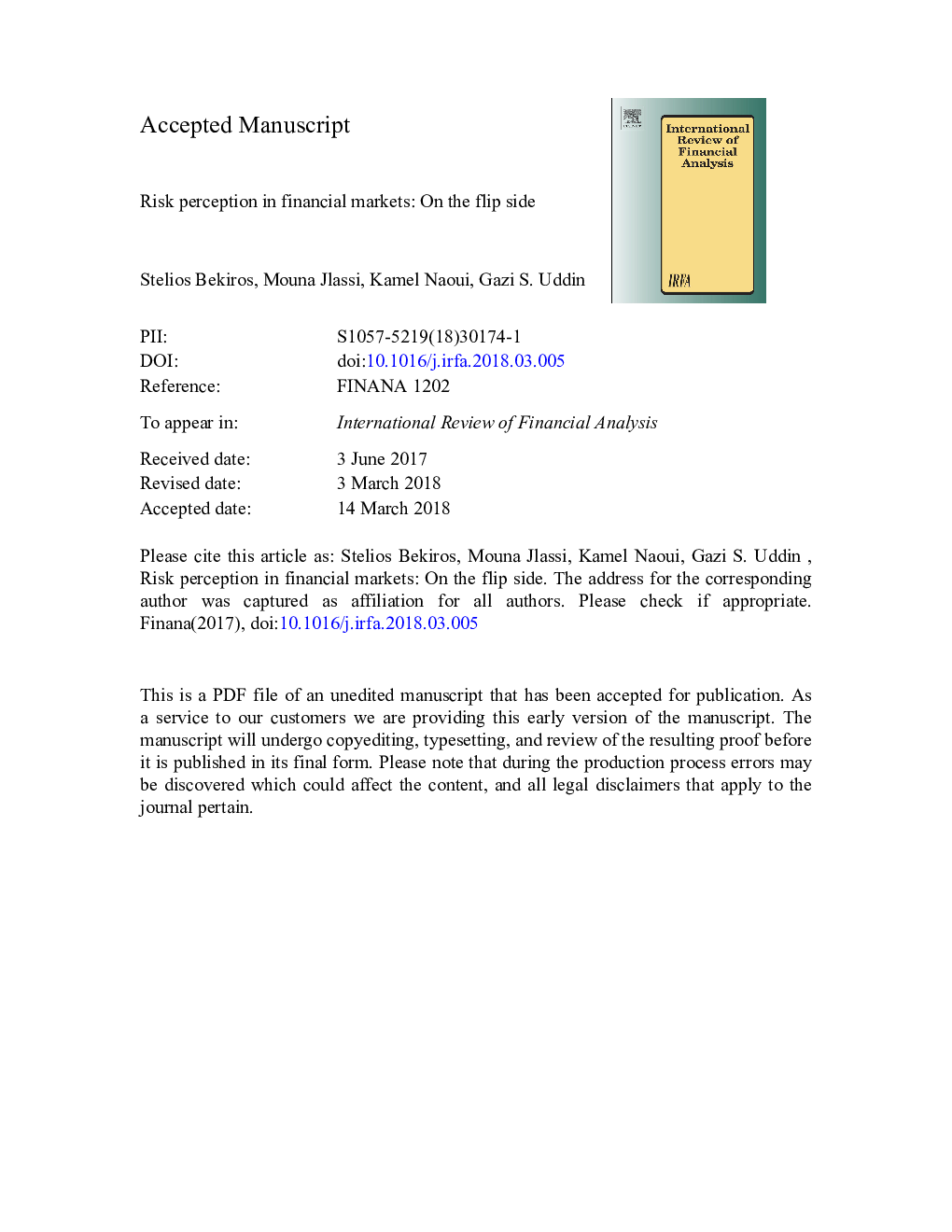| Article ID | Journal | Published Year | Pages | File Type |
|---|---|---|---|---|
| 7355689 | International Review of Financial Analysis | 2018 | 52 Pages |
Abstract
We propose an alternative approach to capture the asymmetric risk-return relationship in financial markets using affective cognitive analysis. Implied volatility is employed as a robust gauge of risk perception. Markets exhibit a dramatic increase in fear sentiment when extreme upper-quantile losses hit investors while conditional positive returns fuel exuberance. However, an inverse response is observed in Asian markets due to normative societal phenomena, such as herding. A cognitive paradigm provides with a better interpretation of contagion than classical leverage-feedback theories as risk perception evolves dynamically over time. Overall, the fear of losses is not the flip side of gains' exuberance.
Related Topics
Social Sciences and Humanities
Economics, Econometrics and Finance
Economics and Econometrics
Authors
Stelios Bekiros, Mouna Jlassi, Kamel Naoui, Gazi Salah Uddin,
